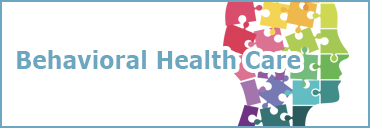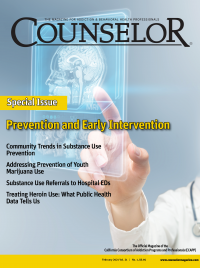Share

Addiction often causes havoc and suffering for families or concerned significant others (CSOs). Stress, anger, anxiety, worry, depression, confusion, family conflict, broken relationships, loss of trust, and financial problems are common effects of addiction on families or CSOs (Daley & Douaihy, 2019; Gross, Lagos, Yessengaliyeva, LaCasse, & Liepman, 2018). Grief and trauma are also common for those who lose loved ones as the result of drug overdoses, accidents, suicides, or medical complications caused or exacerbated by addiction (Daley, 2017).
Unfortunately, there are low rates of treatment engagement for addicted family members, and many family members do not receive professional help despite the fact that there are effective interventions to help them engage their loved ones in treatment or learn ways to cope with the effects of addiction on their own lives (Smith & Meyers, 2007; Landau et al., 2000). There are specific therapies to help spouses, partners, and families work together to address the addiction and its impact on all family members, but these are vastly underutilized (NIDA, 2018; Klosterman & O’Farrell, 2013).
Mutual-aid programs for families and CSOs, such as Al-Anon and Nar-Anon, are available throughout the US and provide an important source of help and support. Other programs unique to a specific geographic area help families and CSOs engage in their own recovery journeys. In our communities there are three organizations offering family support programs. This article describes one of these, Bridge-to-Hope (B2H), sponsored by hospitals within University of Pittsburgh Medical Center. Over the past decade, I (Dennis Daley) participated in numerous educational, support, and dissemination activities, interviewed program participants, conducted surveys to identify members’ worries and concerns and get their ratings of the usefulness of the program, recruited members to present the family perspective at professional conferences, and attended social functions sponsored by B2H. For over three years, Theresa has conducted weekly support group meetings, so we both have extensive experience with this unique program and how members benefit from it. We believe this program can be replicated and adapted to other communities and hope our two articles interest readers in expanding family support programs in their communities.
UPMC Bridge-to-Hope (B2H) Family Support Programs
B2H is a support group that initially started in the early 2000s at one location, then expanded to others. This program provides hope, encouragement, support, and education by members sharing their experiences with addicted loved ones in supportive group atmospheres. Members discuss their struggles and feelings openly in a nonjudgmental environment as well as share successes and helpful coping strategies. New members often state that they feel alone, despondent, hopeless, and at their wit’s end in dealing with addicted loved ones who are not in treatment or recovery, or who have relapsed following periods of stable recovery. Connecting with other family members or CSOs who have experienced similar situations and learned to cope with feelings and behaviors provides a sense of hope that positive change can occur. Members of B2H programs learn that life can improve, especially as they engage in their own recovery and focus on self-change and self-care.
B2H support group meetings are free and no registration is needed. Ninety-minute meetings are held weekly at two locations and biweekly at a third location. A monthly “Beyond B2H Bereavement Group” is offered for families or CSOs who have experienced death of loved ones due to addiction. One B2H program has a website with written and video materials about addiction and recovery, including advice on what people can do to help their family units or themselves. Another B2H program has a Facebook page in which members share information, resources, and support. These programs have created a fellowship in which members support each other in recovery and they reach many people not involved in professional treatment.
Professionals facilitate the B2H group discussions and address a range of issues in group discussions and educational presentations, allowing members to increase their knowledge and learn coping skills. Although these are not therapy groups, participation is often therapeutic for members. Issues or areas focused on in educational presentations or recovery group discussions may include any of the following:
- Understanding and accepting loved ones’ addictions
- Causes, effects, and symptoms
- Addiction and the brain
- Biological vulnerability
- How addiction is diagnosed
- Treatment of addiction
- Psychosocial, medications, and treatment programs
- Community resources
- Overdose prevention
- How to pay for treatment or get financial help from government agencies
- Relapse following a period of recovery
- Causes
- How to spot it early
- How to intervene to limit the damage it causes
- Understanding co-occurring mental illness
- Types, effects, and treatment of addiction combined with depressive disorders, anxiety disorders, or other psychiatric disorders
- Impact of addiction on the family system and individual members, including children, and community resources for families
- Working through emotions
- Guilt, shame, anger, anxiety, worry, sadness, depression, confusion, and feeling overwhelmed
- How letting go of painful emotions starts the process of healing from trauma
- Changing behaviors
- Stopping attempts to control the addicted family members
- Setting limits or boundaries on their behaviors
- Letting addicted family members experience consequences of behaviors associated with active addiction
- When possible, participating in loved ones’ treatment and recovery activities
- Taking care of the self
- Focusing on an individual’s physical, emotional, spiritual or social needs, and his or her own recovery
- When to consider getting involved in other mutual-aid programs or professional treatment
- Giving and getting support from other family members in recovery
New members usually focus initially on their loved ones who are addicted, but as time goes on they shift the focus to their own emotions and behaviors. They learn which of their behaviors to change and which behaviors can help them survive the chaos caused by addiction. While they may influence their loved ones to engage or stay in treatment, families also learn that recovery is the responsibility of their addicted family members and that they cannot “make them” recover or protect them from relapse. Over time, their anxiety and worry decrease; they feel less guilty and less like victims of their loved ones’ addictions; and they increase their involvement with other family members in recovery.
Parents and grandparents also have to manage stressors related to the addicted adult family members moving back home, needing financial support, or being unable to take care of their own children. The financial burden can be extensive, as families use savings or loans to pay for treatment of their loved ones, help pay off their loved ones’ debts, and help with living expenses until these loved ones are able to support themselves. In some instances, grandparents take custody of their grandchildren when the addicted parents are unable to care for them.
Conclusion
Families affected by addiction benefit from education, support from others, and the opportunity to learn new ways to cope with feelings or behaviors. Bridge-to-Hope (B2H) is an example of an innovative family support program started by families harmed by addiction. For its work helping family members and engaging in numerous community initiatives addressing addiction, B2H received the prestigious Benjamin Rush Community Organization Award from Allegheny County Medical Society.
In our follow-up article, we will provide more details of how B2H has helped hundreds of families, the community, and contributed to education of providers in medical and behavioral health systems.
Family Resources
- Al-Anon: www.al-anon.org
- Faces and Voices of Recovery: www.facesandvoicesofrecovery.org
- Facing Addiction: www.facebook.com/facingaddiction/
- Family Resource Center: www.familyresourcectr.org
- National Association for Children of Addiction: www.nacoa.org
- Partnership to End Addiction: www.drugfree.org
References
- Daley, D. C. (2017). Grief has no expiration date, part I: Losing a loved one to addiction. Counselor, 18(4), 19–22.
- Daley, D. C., & Douaihy, A. (2019). A family guide to coping with substance use disorders. New York, NY: Oxford University Press.
- Gross, K. A., Lagos, M. E., Yessengaliyeva, E., LaCasse, M. M., & Liepman, M. R. (2018). Family involvement in addiction, treatment, and recovery. In S. C. Miller, D. A. Fiellin, R. N. Rosenthal, & R. Saitz (Eds.), The ASAM principles of addiction medicine (6th ed.) (pp. 1010–26). New York, NY: Wolters Kluwer.
- Klostermann, K., & O’Farrell, T. J. (2013). Treating substance abuse: Partner and family approaches. Social Work in Public Health, 28(3–4), 234–47.
- Landau, J., Garrett, J., Shea, R. R., Stanton, M. D., Brinkman-Sull, D., & Baciewicz, G. (2000). Strength in numbers: The ARISE method for mobilizing family and network to engage substance abusers in treatment. A relational intervention sequence for engagement. The American Journal of Drug and Alcohol Abuse, 26(3), 379–98.
- National Institute on Drug Abuse (NIDA). (2018). Principles of drug addiction treatment: A research-based guide (3rd ed.). Retrieved from https://www.drugabuse.gov/download/675/principles-drug-addiction-treatment-research-based-guide-third-edition.pdf?v=74dad603627bab89b93193918330c223
- Smith, J. E., & Meyers, R. J. (2007). Motivating substance abusers to enter treatment: Working with family members. The CRAFT Intervention Program. New York, NY: Guilford Press.
About Me
Theresa Lee, MSCP, is a faculty member at Penn State University Department of Psychology, a private therapist, and has been a group leader for over three years for the UPMC East B2H support group.











 Counselor Magazine is the official publication of the California Association of Addiction Programs and Professionals (CCAPP). Counselor offers online continuing education, article archives, subscription deals, and article submission guidelines. It has been serving the addiction field for more than thirty years.
Counselor Magazine is the official publication of the California Association of Addiction Programs and Professionals (CCAPP). Counselor offers online continuing education, article archives, subscription deals, and article submission guidelines. It has been serving the addiction field for more than thirty years.